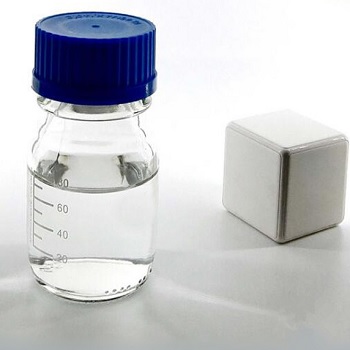| Identification | More | [Name]
Glycidyl methacrylate | [CAS]
106-91-2 | [Synonyms]
2,3-EPOXYPROPYL METHACRYLATE
2-METHYL-ACRYLIC ACID OXIRANYLMETHYL ESTER
GLYCIDYL A-METHYLACRYLATE
GLYCIDYL METHACRYLATE
METHACRYLIC ACID 2,3-EPOXYPROPYL ESTER
METHACRYLIC ACID GLYCIDYL ESTER
1-Propanol, 2,3-epoxy-, methacrylate
2-((methacryloxy)methyl)oxirane
2,3-epoxy-1-propanol,methacrylate
2,3-epoxy-1-propanomethacrylate
2,3-Epoxypropanol methacrylate
2-methyl-2-propenoicacid,oxiranylmethylester
2-methyl-2-propenoicacioxiranylmethylester
2-Oxiranylmethyl 2-methylacrylate
2-Propenoicacid,2-methyl-,oxiranylmethylester
acriesterg
blemmerg
blemmergma
CP 105
cp105 | [EINECS(EC#)]
203-441-9 | [Molecular Formula]
C7H10O3 | [MDL Number]
MFCD00005137 | [Molecular Weight]
142.15 | [MOL File]
106-91-2.mol |
| Chemical Properties | Back Directory | [Appearance]
clear liquid | [Melting point ]
-52°C | [Boiling point ]
189 °C(lit.)
| [density ]
1.075 g/mL at 20 °C
| [vapor pressure ]
4.2hPa at 25℃ | [refractive index ]
n20/D 1.449(lit.)
| [Fp ]
169 °F
| [storage temp. ]
Refrigerator | [solubility ]
Chloroform (Slightly), Methanol (Slightly) | [form ]
Liquid | [color ]
Clear | [Stability:]
Unstable. Light sensitive. May be stabilized with around 100ppm MEHQ. Refrigerate. | [Water Solubility ]
0.5-1.0 g/100 mL at 20 ºC | [BRN ]
2506 | [InChIKey]
VOZRXNHHFUQHIL-UHFFFAOYSA-N | [LogP]
0.96 at 25℃ | [CAS DataBase Reference]
106-91-2(CAS DataBase Reference) | [IARC]
2A (Vol. 125) In prep. | [NIST Chemistry Reference]
2-Propenoic acid, 2-methyl-, oxiranylmethyl ester(106-91-2) | [EPA Substance Registry System]
106-91-2(EPA Substance) |
| Safety Data | Back Directory | [Hazard Codes ]
Xn,T | [Risk Statements ]
R20/21/22:Harmful by inhalation, in contact with skin and if swallowed .
R36/38:Irritating to eyes and skin .
R43:May cause sensitization by skin contact.
R60:May impair fertility.
R45:May cause cancer. | [Safety Statements ]
S26:In case of contact with eyes, rinse immediately with plenty of water and seek medical advice .
S28:After contact with skin, wash immediately with plenty of ... (to be specified by the manufacturer) .
S45:In case of accident or if you feel unwell, seek medical advice immediately (show label where possible) .
S36/37:Wear suitable protective clothing and gloves .
S53:Avoid exposure-obtain special instruction before use . | [RIDADR ]
UN 2810 6.1/PG 3
| [WGK Germany ]
2
| [RTECS ]
OZ4375000
| [TSCA ]
Yes | [HazardClass ]
8 | [PackingGroup ]
III | [HS Code ]
29161490 | [Hazardous Substances Data]
106-91-2(Hazardous Substances Data) | [Toxicity]
dog,LCLo,inhalation,1400mg/m3/6H (1400mg/m3),LUNGS, THORAX, OR RESPIRATION: OTHER CHANGES,National Technical Information Service. Vol. OTS0530684, |
| Hazard Information | Back Directory | [General Description]
Colorless liquid with a fruity odor. Floats on water. | [Reactivity Profile]
Epoxides, such as GLYCIDYL METHACRYLATE(106-91-2), are highly reactive. They polymerize in the presence of catalysts or when heated. These polymerization reactions can be violent. Compounds in this group react with acids, bases, and oxidizing and reducing agents. They react, possibly violently with water in the presence of acid and other catalysts. | [Air & Water Reactions]
Flammable. Slightly water soluble. | [Health Hazard]
The liquid irritates eyes about as much as soap. Prolonged contact with skin produces irritation and dermatitis. | [Fire Hazard]
Special Hazards of Combustion Products: Irritating vapors are generated when heated | [Description]
Glycidyl Methacrylate (GMA) is a clear, colorless liquid with a potent ester and fruity odor. It comprises a polymerizable methacrylate functional group on one end and a reactive epoxy group on the other. It is slightly miscible with water, soluble in most organic solvents, and has relatively low volatility. Its vapor is heavier than air. It copolymerizes readily with various functional groups, such as phenols, ketones, acids, and amines. The added epoxy group imparts durability, mechanical strength, optical transparency, and adhesiveness. | [Chemical Properties]
Glycidyl methacrylate (GMA) is a colorless liquid with a fruity odor. Floats on water. (USCG, 1999)

Glycidyl methacrylate is a polyfunctional monomer. It acts as an adhesion promoting crosslinking co-monomer for acrylic and vinyl resins. It is also a reactive colorless diluent. GMA is soluble in ethanol, acetone, diethyl ether, benzene.
| [Uses]
Glycidyl methacrylate (GMA) is a common monomer used in the creation of epoxy resins. It is used to provide epoxy functionalization to polyolefins and other acrylate resins.
Glycidyl methacrylate is used in the production of polymer coatings and finishes, adhesives, plastics and elastomers.
Glycidyl methacrylate dextran has been reported to be used as a biocompatible hydrogel. In situ polymerization of GMA with trimethylolpropane trimethacrylate to form macroporous sorbents has also been reported. GMA may also be grafted onto polypropylene. | [Definition]
ChEBI: Glycidyl methacrylate is an enoate ester obtained by formal condensation of the carboxy group of methacrylic acid with the hydroxy group of glycidol. It is an enoate ester and an epoxide. It is functionally related to a methacrylic acid and a glycidol. | [Preparation]
Glycidyl methacrylate is produced from methacrylic acid and glycidol. Glycidol contain both epoxide and alcohol functional groups.It is an enoate ester and an epoxide. It derives from a methacrylic acid and a glycidol. | [Reactions]
Glycidyl methacrylate (GMA) is a kind of functional monomer. Its active vinyl and epoxy groups could be grafted with polyolefin and reacted with the polar groups such as amine, hydroxyl and carboxyl group, respectively. It can also undergo polymerization to form poly (glycidyl methacrylate). | [Synthesis Reference(s)]
Tetrahedron, 48, p. 5099, 1992 DOI: 10.1016/S0040-4020(01)90120-6
Synthesis, p. 1019, 1986 DOI: 10.1055/s-1986-31856 | [Flammability and Explosibility]
Flammable | [Toxics Screening Level]
For the purpose of complying with R225, both the short term ITSL (16 μg/m3 with 24 hour
averaging) and the chronic ITSL (0.8 μg/m3 with annual averaging time) should be met. |
|
|